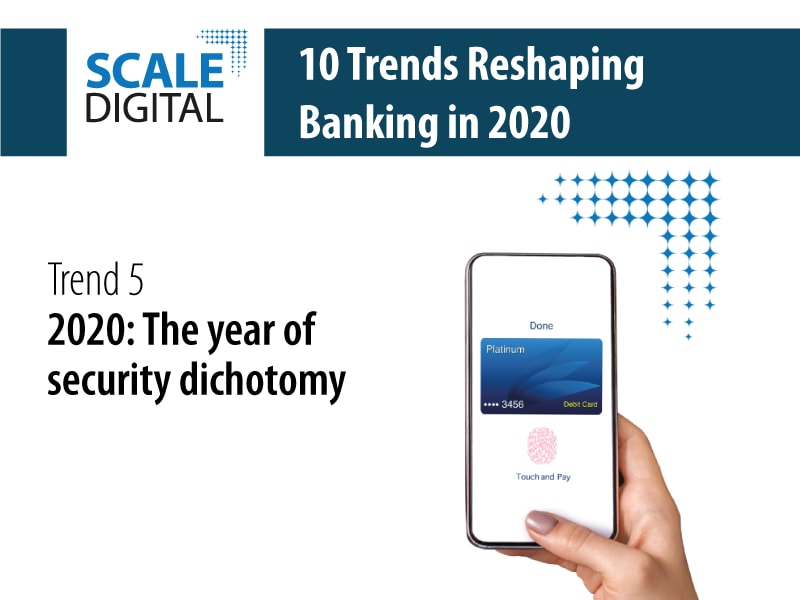Home > Blogs > Analytics and AI – what is their usage and where are we heading
Analytics and AI – what is their usage and where are we heading

In every article related to digital banking transformation we hear about how analytics, machine learning and artificial intelligence would change the digital game in banks. But where we are today on this subject, and how this script would play out for the future is the topic of my blog today.
Yes, analytics, machine learning and artificial intelligence are game changers to any industry today. There is no denying this fact. But it is also true that this is a journey. The journey starts in having/ collecting data, then curing and taking out the right data, employing statistical models in understanding the data patterns, and then trying to make sense whether there are patterns involved within the various aspects of the data, and whether we can understand the patterns to make sense of what the pattern suggests as specific insights that can be actionized. Let’s take a simple everyday case of shopping on Amazon. When you go in for the first time they have no data about you. They look at what you are buying and provide recommendations for similar offers based on other people’s buying behavior. Let’s assume you buy product A. The next time you login, based on your browsing and buying history, it would suggest the other products you may be interested in, looking at the pattern of other people who had browsed around or bought product A. As they collect more and more data, they get better at trying to guess what products you may be interested in and try to suggest the same. This is nothing but the next best offer model used across industries in trying to cross sell better and contextually to the end customer. But before I move out from Amazon, I would ask you a question – how many times have you bought into something which has being suggested by Amazon? I have bought only 2 times out of the 100 or more times I have shopped in amazon in the last 6-7 years. I am not saying that their offers are not intelligent or out of context, but most of the time, I have logged into Amazon I knew what I was looking for, and then tried to match my buying parameters around that item, rather than looking at Amazon is offering. The take away for me is that most of the time, when we are in a buying mode, human beings would know what they are looking for, and possibly would go by their intelligence rather than what the artificial intelligence bot is suggesting. The reason for this is that artificial intelligence is yet to evolve to that level where it can be anything close to the intelligence level of human beings. If average human intelligence is 100, most of the AI bots would be less than 5.
So how does AI work for banking. For AI to work there must be data in banks. Yes, banks have tons of data, but mostly this is transactional data. It gives data on his withdrawals and deposits and most of the transactions do not say ‘why’ the transaction was done. So pattern analysis can yield expected balances, and based on that can be used for predicting whether the customer would be short of funds gauging his/ her transactional behavior. What banks are now trying to do is that try to get to the ‘why’ of the transactions, so as to better understand where money comes from and where money goes for a customer, so that they can provide proactive advisory to the customer of how to save better, how to invest better and get a better bang for the buck. This is indeed a journey, because banks needs to clean up their systems, so that they automatically provide the ‘why’ part of their transactions. This means cleaning all their channels (which include ATM, POS, Payment systems: which may not be in their control) solutions to give them the right details of the transactions so that they can make sense of the ‘why’ part of the transaction. With this knowledge, the bank would be in a better position to use machine learning to get insights in the customer’s spending behavior and advise him/her better. Better transactional data also helps the bank understand fraud patterns better. Once we know through AI the typical transactional pattern of the customer, any pattern which does not match that pattern can be a possible fraud pattern. This helps in protecting the customer from all sorts of fraud including cyber fraud. In a modern world we can use the devices of the customer to identify the particular device the customer uses, the location which is used by the customer to do transactions, the typical types of transaction and spending patterns etc. Anything not matching can be caught by AI to indicate that something is not so right. Thus fraud engines are very fast moving to AI from their earlier rule based avatars. The more AI learns on transactional patterns and fraud patterns the better it would be in recommending and advising on action.
Automation is another area where AI has a big role to play in improving operational efficiencies and thus reducing the cost to income ratio. But today bank processes are far away from automation even where rules can be used to achieve it, keeping aside AI for automation. Most of the decision making, including credit decisions, audit decisions, charge waiver decisions etc. all are manual because it is expected that a human being is supposed to decide. But what is the basis for the decision? He/she decides based on data, and in complex cases the decision is taken based on data from multiple sources along with complex rules. But in the world of AI which works on data, and also on capability to learn on rules and patterns – do we need human beings to take routine decisions? Rather human beings should be used for very complex decision making, where a normal AI engine fails. Definitely automation use cases would be quite popular in the AI world, as they would be easier to execute and get results on, which brings in tangible benefits to the banks.
Cross sell is an area where AI can have a significant play. But in today’s bank’s the reality is that existing customers with 2 credit card from the bank keeps on getting offers on taking the same or lower category of credit cards from the same bank. This happens because the data available in the banks is not clean. Same customer has multiple identities across different systems which the bank owns. Campaigns are run on data which is not clean, and thus different campaigns yield same results which irritate the customer instead of wowing the customer. But banks are working hard to become the Amazons of the world. Their data journey has started but it would take some time till they get all the data cleaned up, organized and then get the models right to get proper insight to thus send them the right actionable. This is a journey and it would take the biggest of the banks some time to get the pieces of the puzzle right end to the end.
The digital bank of tomorrow is being looked at as being a distributor where they would be distributing both banking and non-banking products and services which will include life style needs of end consumers. In such a scenario the data sources would multiply, and thus banks would indeed need to apply ML technologies to make sense of these varied and vast data sources, and come up with the right gleaned insight which would lead to a contextual actionable for the end customer. Thus a bank of the future would mandatorily require AI/ ML systems so as to engage the customer meaningfully.
To summarize, even the most advanced banks are talking data rather than being able to use data effectively to deliver better value to business. This is a journey, and banks have embarked onto it with varying degree of seriousness. The ones who are serious, and are investing significantly in these technology and domain would have much to gain in the future because these would be creating the differentiators and would be winning customers from the other banks with the right tools of engagement which they develop.


Chandramouli Kundagrami
Senior Industry Principal, Product Strategy, Infosys Finacle
More blogs from Chandramouli Kundagrami >